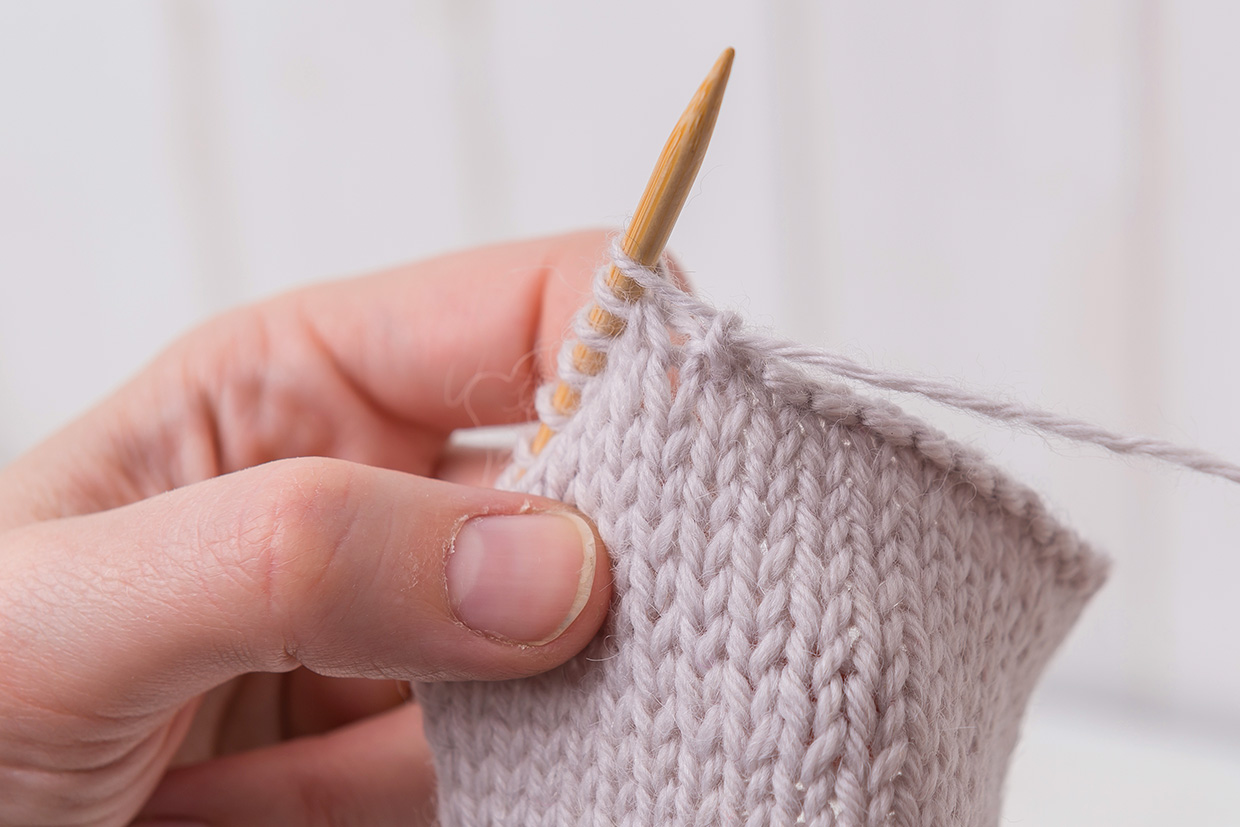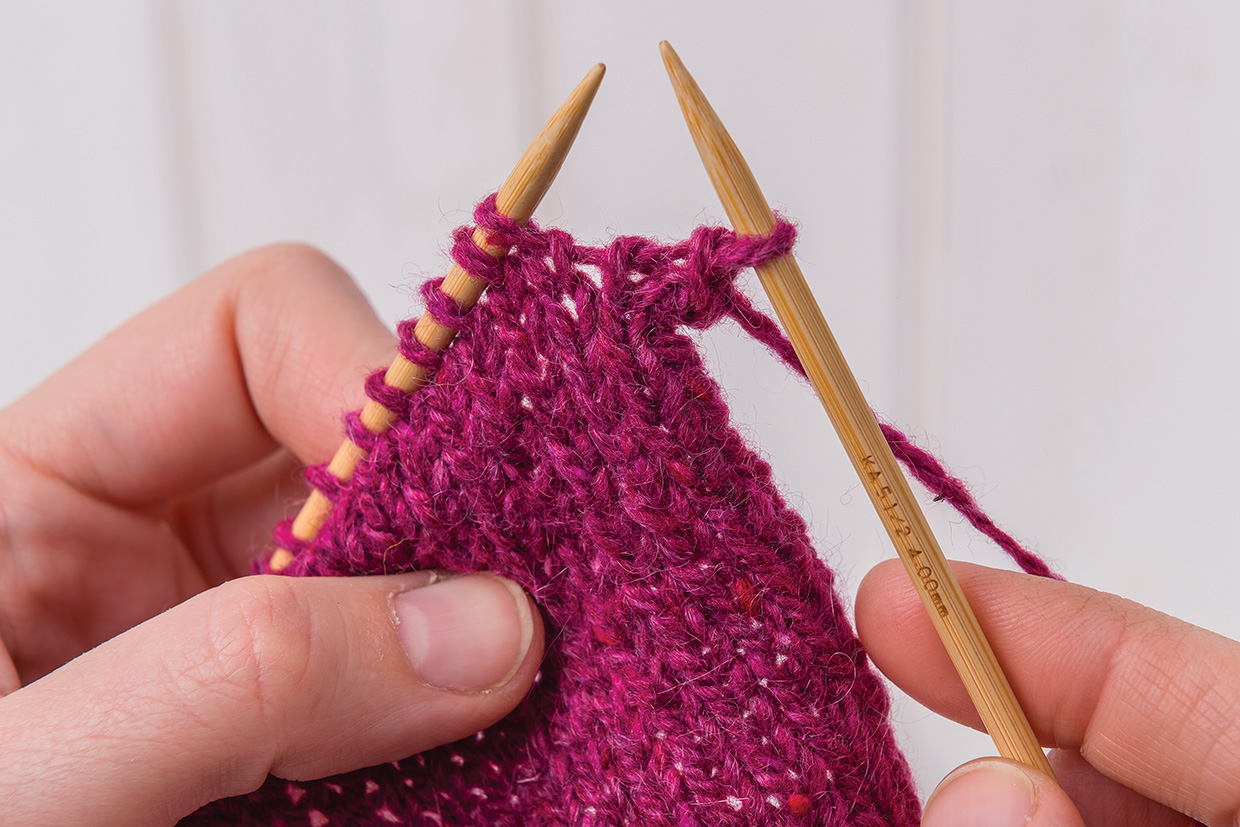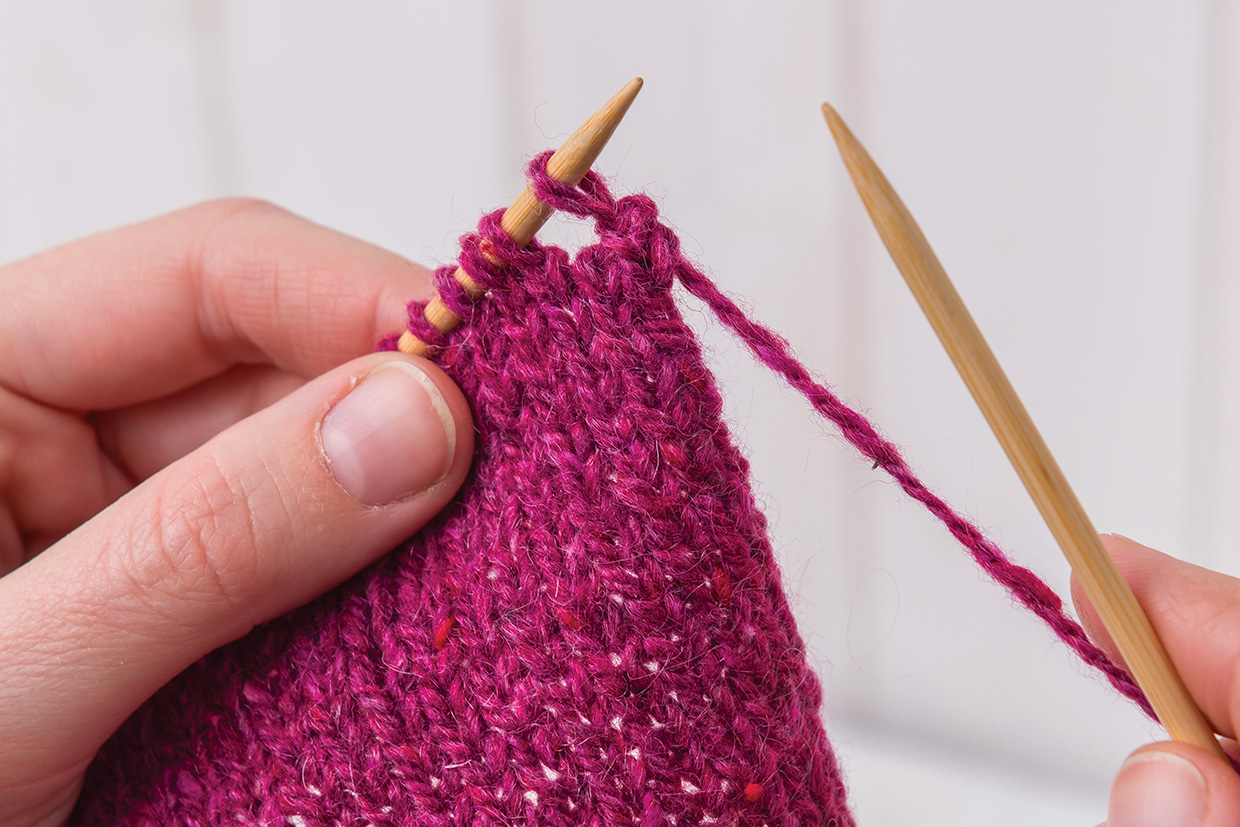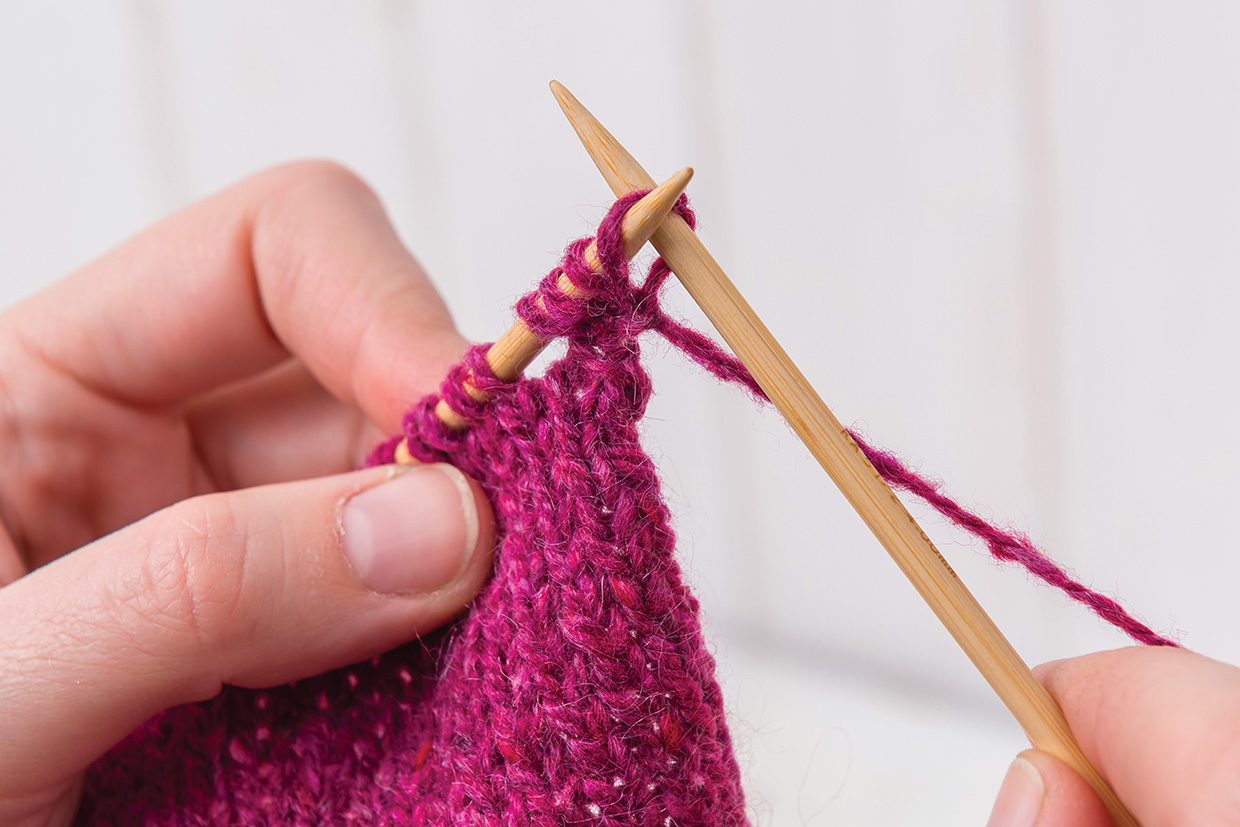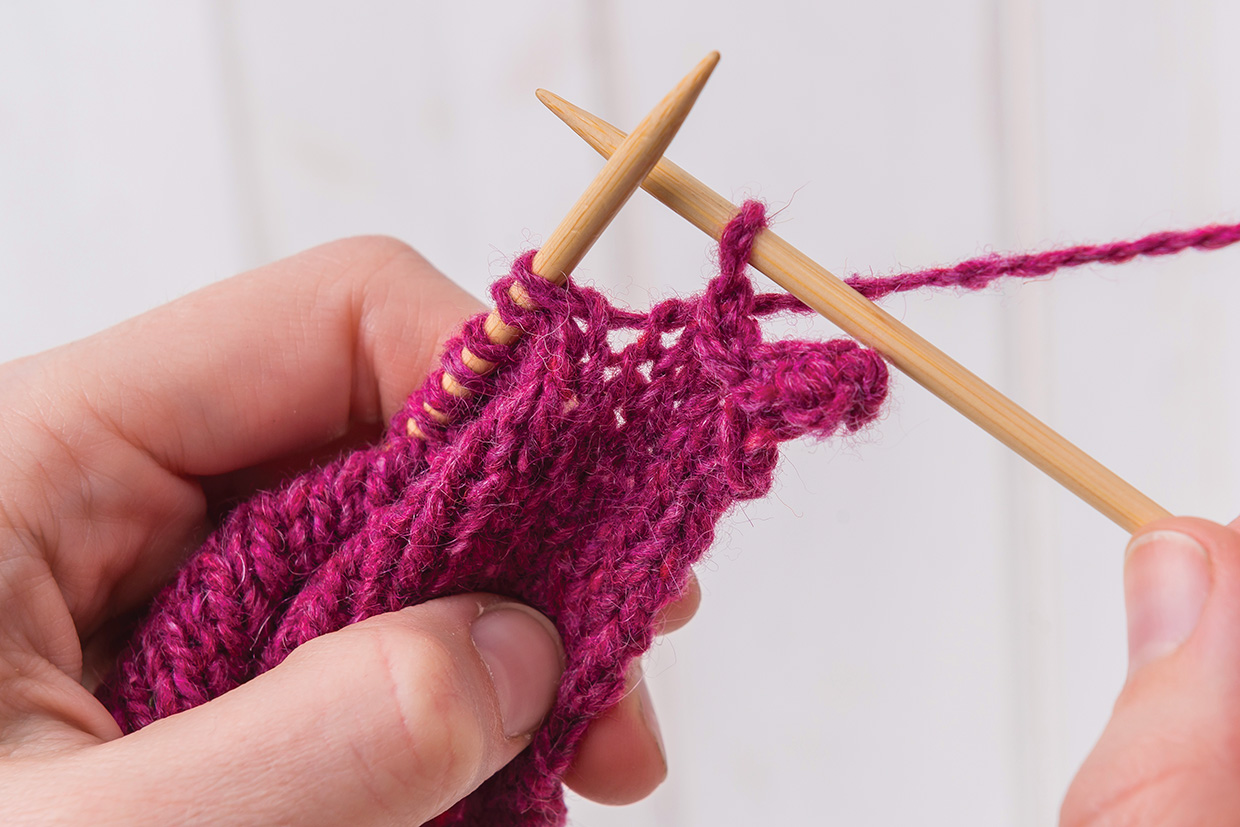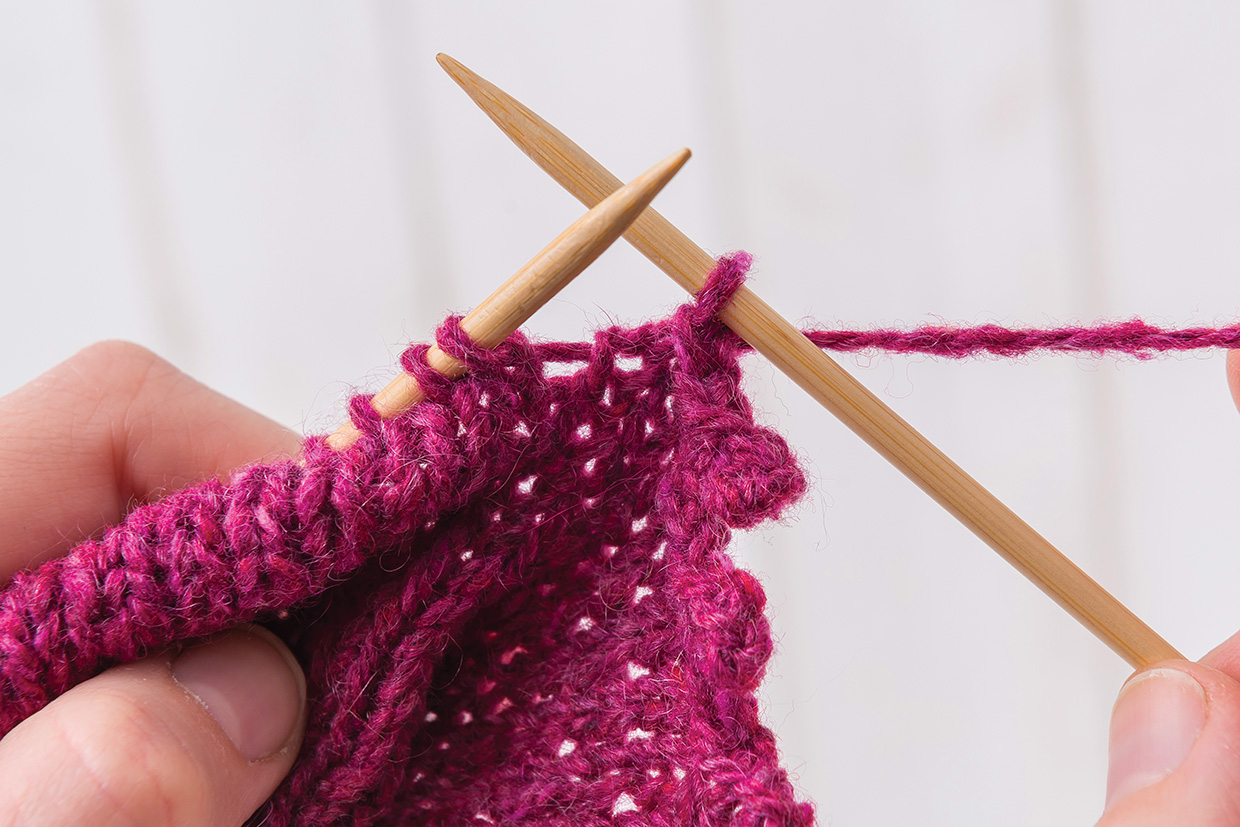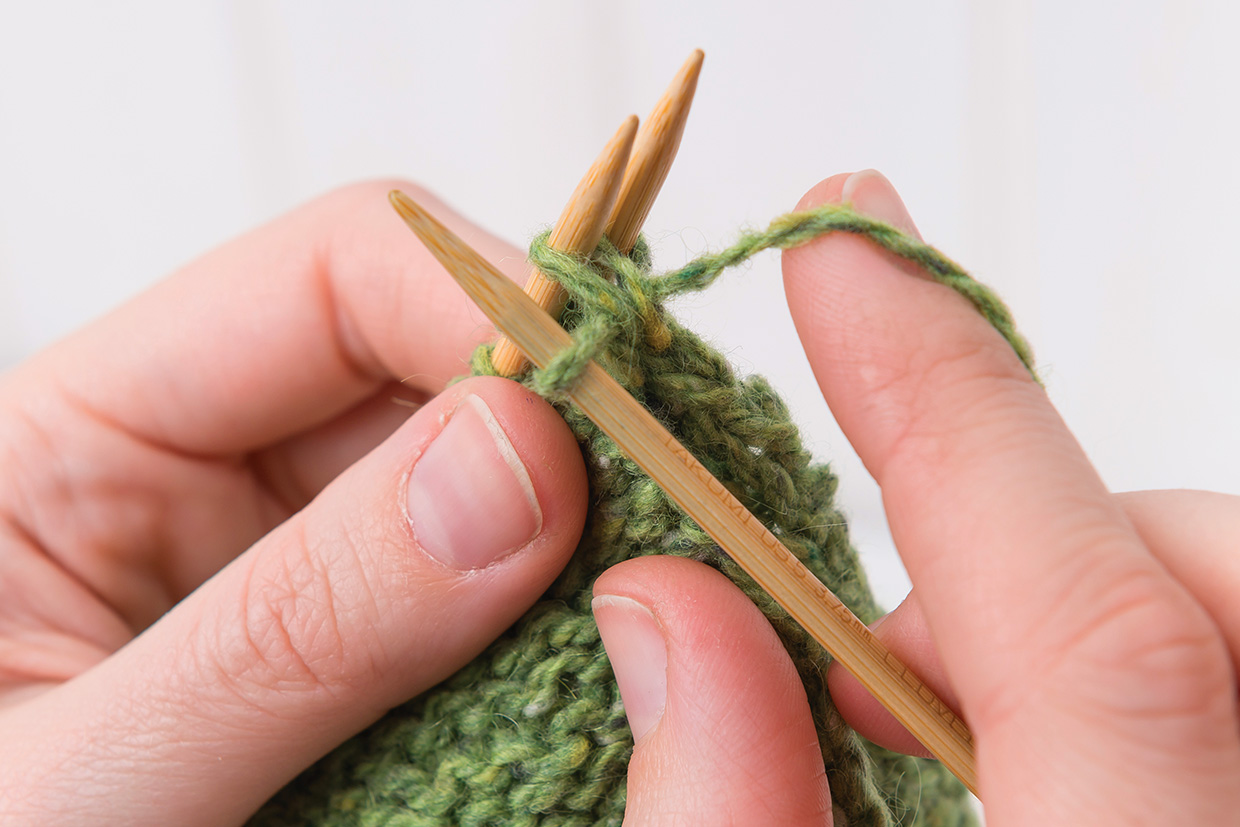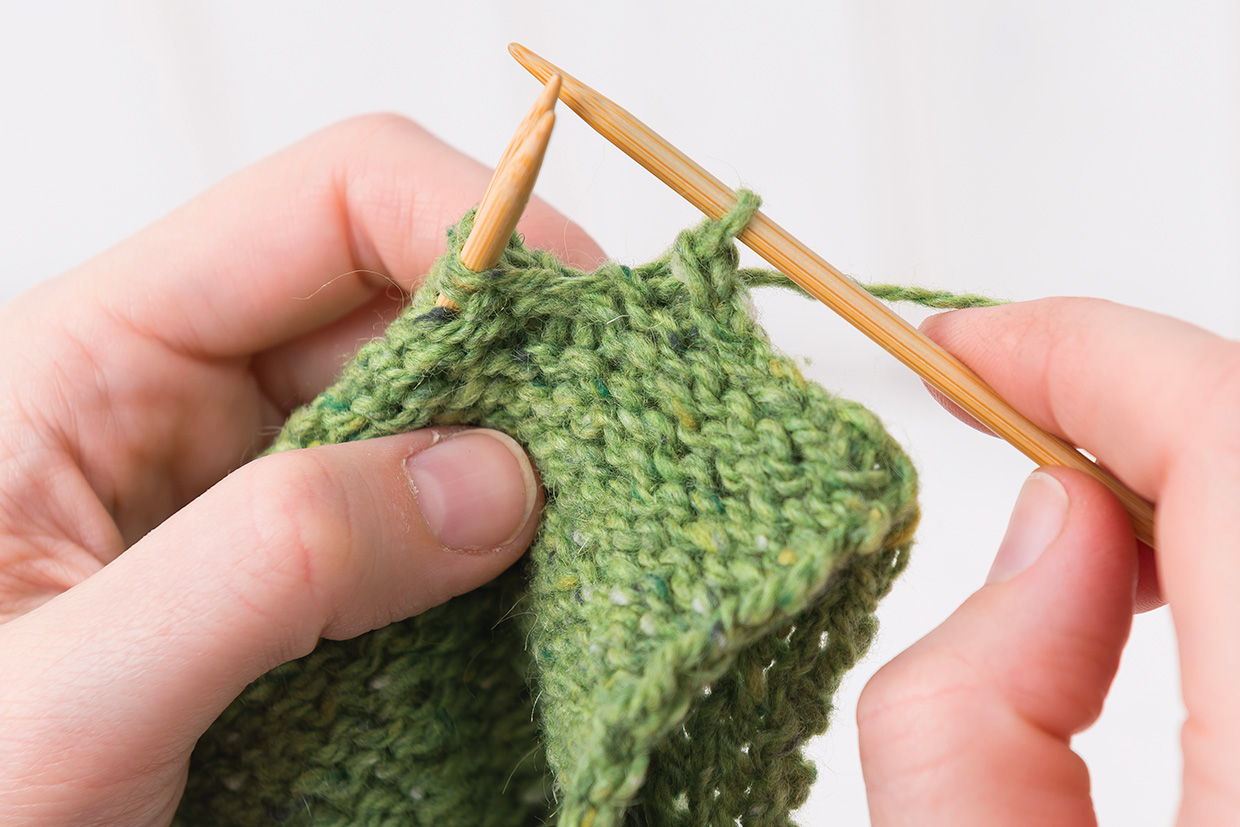Now you’ve learned how to cast on knitting, mastered the knit stitch and made some beginner-friendly garter stitch, it’s time to finish off your piece of knitting to give a neat edge. This is called casting off, the opposite of casting on.
When you come to the end of your knitted item, it’s important to cast off properly, to make sure all the knitted loops you’ve worked don’t unravel.
In this tutorial we'll introduce a range of methods for casting off, from a basic cast off that you'll use all the time, to decorative and stretchy versions that may be suggested by your pattern. Are you ready? Let's learn how to cast off knitting!
How to cast off knitting
There are lots of different ways to cast off, but the first one we are showcasing in this how to cast off knitting guide is the simplest technique and the one that you’ll use most.
To learn how to cast off knitting, you’ll first need to cast on some stitches onto your left needle – about 22 stitches is a good number to practice with, using double knitting (DK) yarn and a pair of 4mm needles.
Then just knit a couple of rows in garter stitch before casting off all the stitches, following the step-by-step guide below.
Remember to try not to hold your needles too tightly or to pull the stitches too much as you go. If the cast-off is too tight, it will bunch up and won’t lie flat.
Don’t worry if your casting off looks uneven – just try again. Undo your work, cast on some more stitches, and give it another go! You'll find that with practice your cast off looks neater and more even.
Other ways to cast off knitting
If you're looking for more advanced techniques for how to cast off your knitting, we've also got walkthroughs for alternative techniques. Scroll down to find the methods for each technique.
1. How to cast off knitting using the sewn cast off
This cast off is ideal for anything that needs to be stretchy, such as the tops of socks and mittens, or the brim of a hat. To do it you'll need a tapestry needle.
If you've tried Kitchener stitch, the technique will feel familiar.
2. How to cast off knitting using the picot cast off
The picot cast off creates a decorative, soft edge that looks gorgeous on shawls or toe-up socks.
It involves casting on stitches and then casting them off again, so it uses up lots of yarn and can be time-consuming to work.
3. How to cast off knitting with a three-needle cast off
The three-needle cast off method is often used to join shoulder seams, and is a handy alternative to Kitchener stitch when you want to cast off stitches from two needles at the same time.
As the name suggests, to do it you'll need an extra knitting needle.
4. How to cast off knitting with Elizabeth Zimmerman's sewn cast off
This technique is worked using a tapestry needle and produces a stretchy cast off that's a good match to the cast on edge.
5. How to cast off knitting with Jeny's surprisingly stretchy cast off
Designed for use on ribbing, this cast off is indeed suprisingly stretchy! Use it for hems and cuffs that need plenty of give.
6. How to cast off knitting using a suspended cast off
This is a variation on the standard cast off that looks very similar but has more elasticity. It's great for hems on garments.
Stretchy cast off techniques
For the best cast offs for socks and more, see our guide on how to finish your knits with a stretchy bind off.
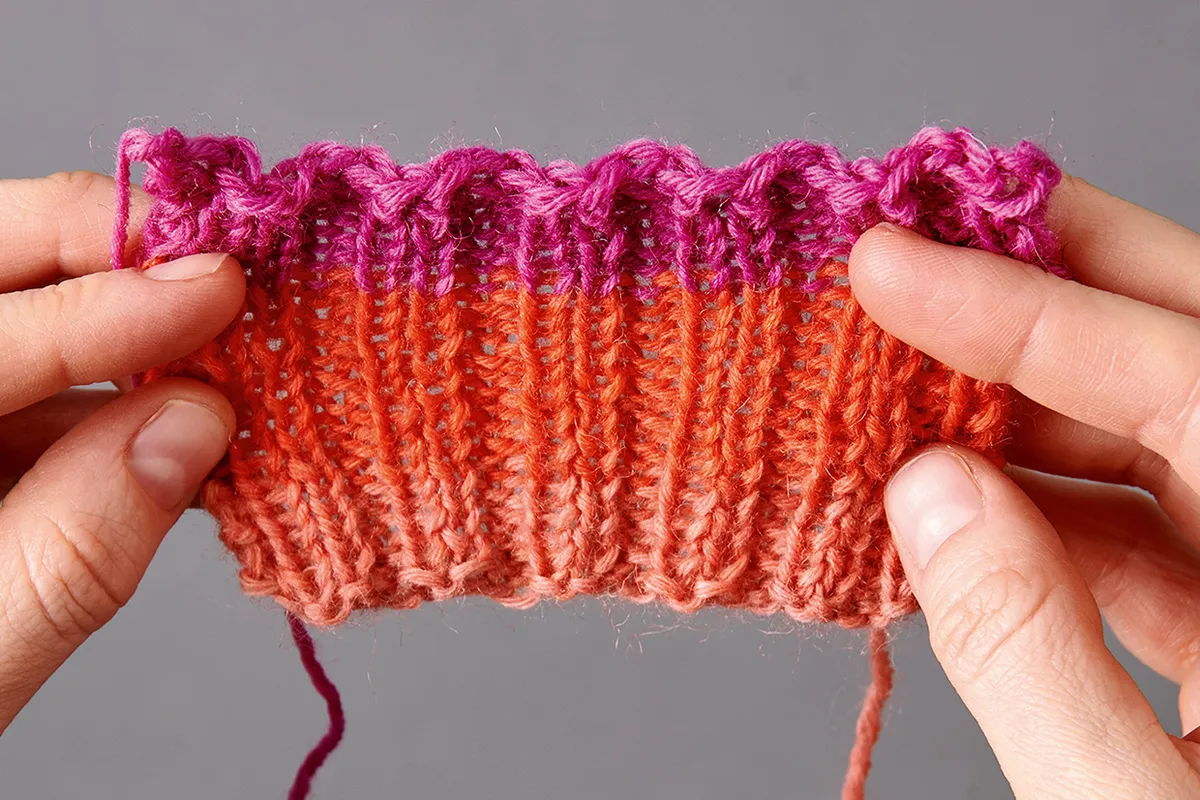
How to bind off knitting
Binding off knitting is exactly the same as casting off knitting – 'bind off' is simply an alternative term that's common in the US.
You might see the techniques covered here referred to as the picot bind off, three-needle bind off, and so on. Again, they're the same methods, just with a slightly different name.
So now you know – wherever you see 'bind off knitting', just replace it with 'cast off knitting' and you'll know what to do!
For more terms you might encounter in your patterns, check out our guide to knitting abbreviations and our knitter's glossary of useful phrases.
How to cast off knitting step by step
Seeing a technique in action can be a huge help, especially when you're a beginner, so take a look at our YouTube video tutorial to find out how the cast off process works.
If you prefer written walkthroughs, you can also check out our how to cast off knitting step-by-step guide below.






